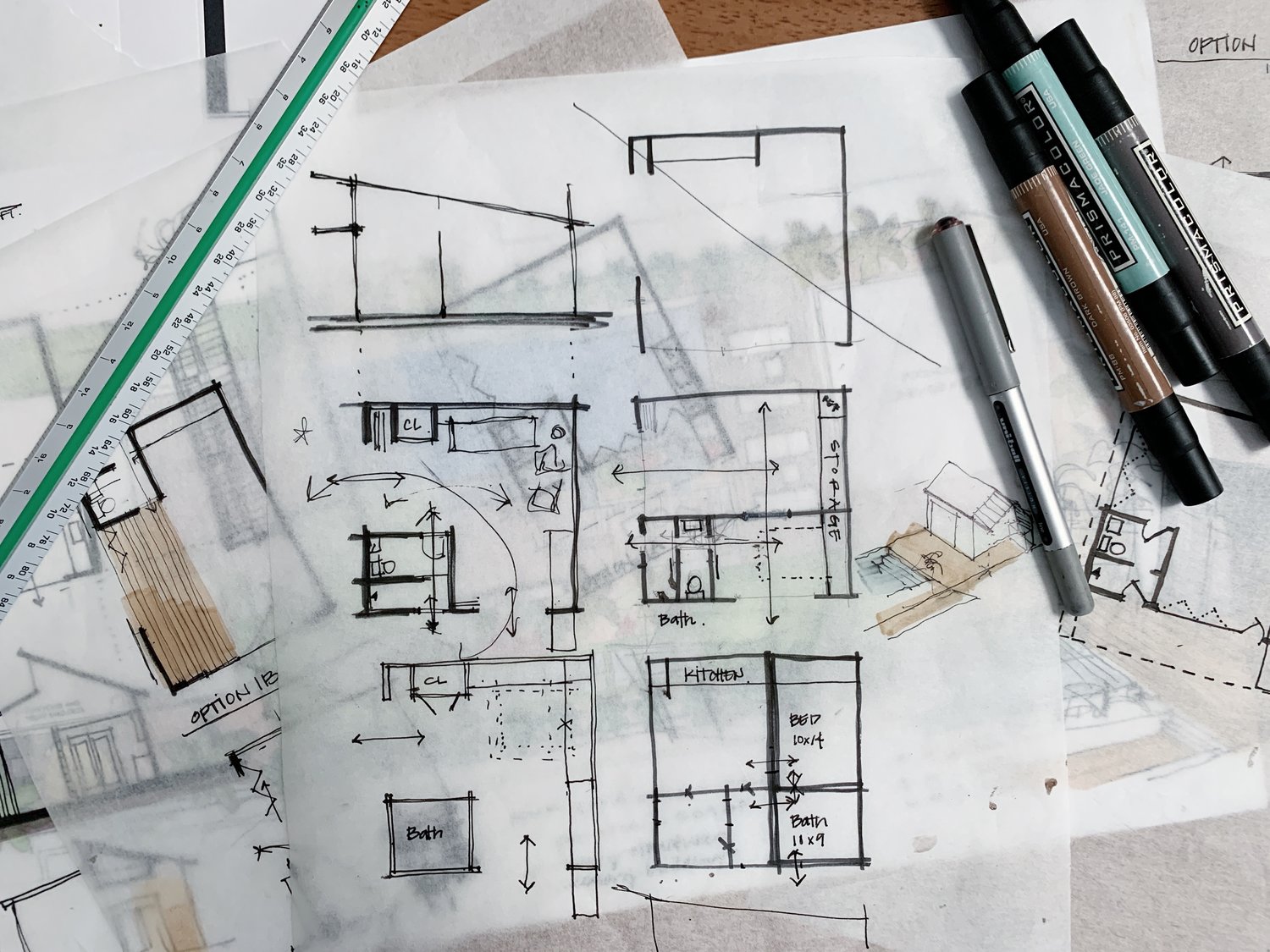Architect Portfolio Tips for Standing Out in the Industry
Architect Portfolio Tips for Standing Out in the Industry
Blog Article
Comprehending the Diverse Job Paths Available for Aspiring Architect
As an aspiring Architect, you have a world of job paths waiting on you. Each path offers special difficulties and possibilities to use your creative thinking and technical knowledge. Whether you're drawn to typical architecture or the subtleties of sustainable layout, there's a niche that lines up with your passions. Recognizing these diverse choices can form your professional trip, however which direction will you select to discover initially?
Conventional Style: Creating Structures and buildings
Traditional design concentrates on making structures and frameworks that mix functionality with aesthetic charm. Your styles can reflect cultural heritage, showcasing regional customs while satisfying modern needs.
You'll develop skills in drafting, model-making, and site evaluation, permitting you to picture and connect your concepts effectively. Involving with customers, you'll require to recognize their vision and equate it into feasible designs.
In addition, constructing codes and sustainability techniques are necessary in your job, ensuring your structures are secure and eco-friendly. As you expand in your occupation, you'll discover opportunities in domestic, business, or perhaps remediation projects, each offering unique obstacles. Accepting typical style leads the way for a meeting profession that admires the past while shaping the future.
Urban Preparation: Shaping Areas and Public Spaces
As an aspiring Architect, you can play a necessary function as a city coordinator, changing just how neighborhoods communicate and operate. By utilizing community involvement strategies, you'll ensure that homeowners have a voice fit their setting. Plus, integrating lasting design principles will certainly help create rooms that not only satisfy today's demands but likewise safeguard the future.
Duty of Urban Planners
While numerous may assume of engineers as the sole visionaries behind buildings, city coordinators play a crucial function in forming the broader landscape of neighborhoods and public areas. They evaluate land usage, zoning regulations, and community needs to create sustainable atmospheres that boost lifestyle. By working together with various stakeholders, you'll help develop parks, transportation systems, and suburbs that advertise social interaction and access. Urban planners likewise concentrate on ecological factors to consider, ensuring that developments incorporate environment-friendly spaces and support biodiversity. Your expertise in spatial design and neighborhood characteristics enables you to imagine future growth while protecting social heritage. In this crucial role, you'll directly influence just how people experience their surroundings, making every project an opportunity for favorable change.
Community Interaction Approaches
Reliable community interaction approaches are vital for urban coordinators to guarantee that the voices of citizens are listened to and valued in the preparation process. To foster purposeful dialogue, you should prioritize open online forums and workshops where neighborhood members can reveal their concepts and worries. By proactively including and paying attention responses, you'll create spaces that show the neighborhood's requirements, inevitably leading to even more lasting and effective metropolitan atmospheres.
Lasting Style Concepts
When creating urban spaces, including sustainable layout concepts is important for creating environments that grow both environmentally and socially. Take into consideration incorporating green rooms, like yards and parks, to improve biodiversity and improve air top quality.
Designing with water preservation in mind is additionally crucial-- consider rain yards and permeable surfaces to take care of stormwater. Including neighborhood members throughout the planning procedure warranties that the spaces you create meet their needs and encourage social interaction. By accepting these principles, you'll contribute to vibrant, lasting urban landscapes that benefit every person.

Landscape Design: Developing Lasting Outside Environments
As you explore landscape style, you'll uncover vital layout principles that produce functional and lovely outside areas. Lasting techniques play a vital duty in making sure these atmospheres flourish while lessening ecological effect. Plus, you'll locate a selection of career opportunities that allow you to make a genuine difference in just how people communicate with nature.
Style Concepts in Landscape
Comprehending layout concepts in landscape style is vital for producing sustainable exterior settings that integrate with nature. You'll require to consider elements like percentage, equilibrium, and scale to guarantee your styles really feel cohesive and welcoming. Integrating indigenous plants not only boosts biodiversity however also reduces water use, making your landscape durable. Consider the flow of room and just how people interact with it; pathways and seating locations should invite exploration and relaxation. Furthermore, take note of seasonal modifications, making with products that enhance the surroundings year-round (Architect). By focusing on sustainability and visual appeals, you can create exterior spaces that improve the community and promote well-being. Welcoming these concepts will establish a strong structure for your occupation in landscape style.
Sustainable Practices Introduction
Lasting methods in landscape style not just focus on aesthetics but likewise focus on environmental health and source conservation. You can make areas that advertise dirt wellness, such as using natural products and practicing permaculture principles. Eventually, these practices ensure your designs benefit both people and the atmosphere for years to come.
Career Opportunities Exploration
With a strong foundation in sustainable techniques, landscape design supplies a variety of career paths that enable you to make a significant impact on the environment. Urban planners often team up with landscape architects to produce eco-friendly spaces in metropolitan setups, boosting city livability. If you're passionate about education and learning, consider becoming a landscape architecture educator, motivating future generations.
Sustainable Layout: Concentrating On Eco-Friendly Practices
As you explore your career in style, welcoming eco-friendly practices can establish you apart in a competitive area. Sustainable design concentrates on producing buildings that decrease ecological effect while enhancing owner wellness. By including sustainable materials, energy-efficient systems, and lasting structure techniques, you'll contribute to a greener future.
Begin by obtaining expertise of eco-friendly accreditations like LEED or BREEAM, which can strengthen your credentials. Consider just how natural light, air flow, and thermal efficiency can optimize layout. Collaborate with designers and environmental professionals to introduce remedies that lower waste and save resources.
Do not neglect the relevance of community participation-- interesting neighborhood stakeholders can motivate styles that integrate with the environment. As customers significantly prioritize sustainability, your know-how in environmentally friendly practices will not only bring in jobs but additionally meet your enthusiasm for responsible architecture. Welcome this vital element of the career, and enjoy your occupation prosper.
Historical Conservation: Safeguarding and Recovering Cultural Heritage
While you commence on your building journey, consider the necessary function of historical preservation in maintaining our cultural heritage. This field concentrates on the defense and repair of substantial buildings, sites, and frameworks that tell the stories of our past. By engaging in historic conservation, you'll help safeguard the architectural legacy that shapes community identity.
As a historical preservation Architect, you'll analyze historic value and assess the problem of frameworks. You'll work very closely with conservationists and historians to ensure genuine repair techniques are employed. This occupation course permits you to blend imagination with research study, allowing you to design solutions that appreciate original products and craftsmanship.
Your job not only adds to sustainability by reusing existing buildings but also fosters a feeling of satisfaction within communities. Embracing this course will aid you end up being a guardian of background, protecting the stories and looks that enrich our lives.
Interior Architecture: Enhancing Indoor Spaces
Historical conservation and indoor architecture both share a commitment to boosting the developed atmosphere, but they concentrate on various aspects. While historical conservation stresses preserving a structure's historical and cultural value, interior style zeroes in on optimizing indoor rooms for functionality and appearances.
As a hopeful Architect, you'll locate that interior architecture allows you to mix creativity with technical abilities. You'll create rooms that not just look great yet likewise advertise comfort and effectiveness. This field includes recognizing just how light, shade, and products engage within a room, affecting state of mind and usability.
You'll work with various jobs, from household homes to industrial offices, guaranteeing that each setting satisfies the needs of its passengers. By prioritizing individual experience, you can transform interiors right into motivating and useful areas, making a substantial effect on exactly how people engage with their environments. Embrace the opportunity to improve indoor environments and shape the way individuals function and live.
Industrial Style: Combining Functionality With Looks
Industrial layout plays a vital duty in producing navigate to this website items that perfectly blend appearances with performance, ensuring that what you use day-to-day is not just visually appealing however additionally practical. As an ambitious Architect, you might immerse yourself in this field, concentrating on developing every little thing from furniture to consumer electronic devices. Your job involves recognizing individual demands, materials, and making procedures, allowing you to produce cutting-edge options that improve day-to-day experiences.
In commercial style, you'll frequently team up with marketing experts, suppliers, and designers, making certain that your styles are not just lovely however likewise practical. You'll learn to balance form and feature, prioritizing use without compromising style. By refining your skills in sketching, 3D modeling, and prototyping, you'll be well-equipped to bring your ideas to life. This profession path supplies a dynamic setting where creativity fulfills usefulness, making it a rewarding choice for architects curious about forming the items of tomorrow.
Regularly Asked Concerns
What Educational Qualifications Do I Required to Become a Designer?
To end up being an architect, you'll require a specialist degree in design, normally a Bachelor's or Master's. In addition, you'll need to complete a teaching fellowship and pass the Architect Registration Examination to exercise legitimately.
Are There Accreditation Demands for Various Architectural Profession Paths?
Yes, there're accreditation demands for different building paths. Architect. You'll need to pass tests, full teaching fellowships, and occasionally go after specialized training, depending upon your selected emphasis, like landscape style, city layout, or historic preservation
What Software Program Skills Are Essential for Architects Today?

Exactly How Can I Gain Practical Experience While Studying Style?
You can acquire practical experience by interning at architectural companies, joining style competitors, offering for neighborhood tasks, or working together with classmates on real-world assignments. pop over to this web-site These possibilities improve your abilities and build important connections in the sector.
What Job Opportunities Exist Outdoors Typical Design Firms?
You can explore numerous work opportunities outside traditional design firms, like urban planning, interior style, landscape architecture, building and construction monitoring, property development, or even duties in sustainability consulting. Each deals one-of-a-kind difficulties and benefits.
Whether you're attracted to standard design or the subtleties of sustainable layout, there's a particular niche that aligns with your passions.When designing metropolitan rooms, integrating lasting layout concepts is crucial for producing atmospheres that prosper both environmentally and socially.As you explore landscape architecture, you'll uncover important design principles that develop practical and beautiful exterior rooms.Recognizing style principles in landscape architecture is essential for producing sustainable outdoor environments that harmonize with nature.In industrial style, you'll commonly team up with makers, designers, and online marketers, making sure blog here that your layouts are not just attractive but additionally feasible.
Report this page